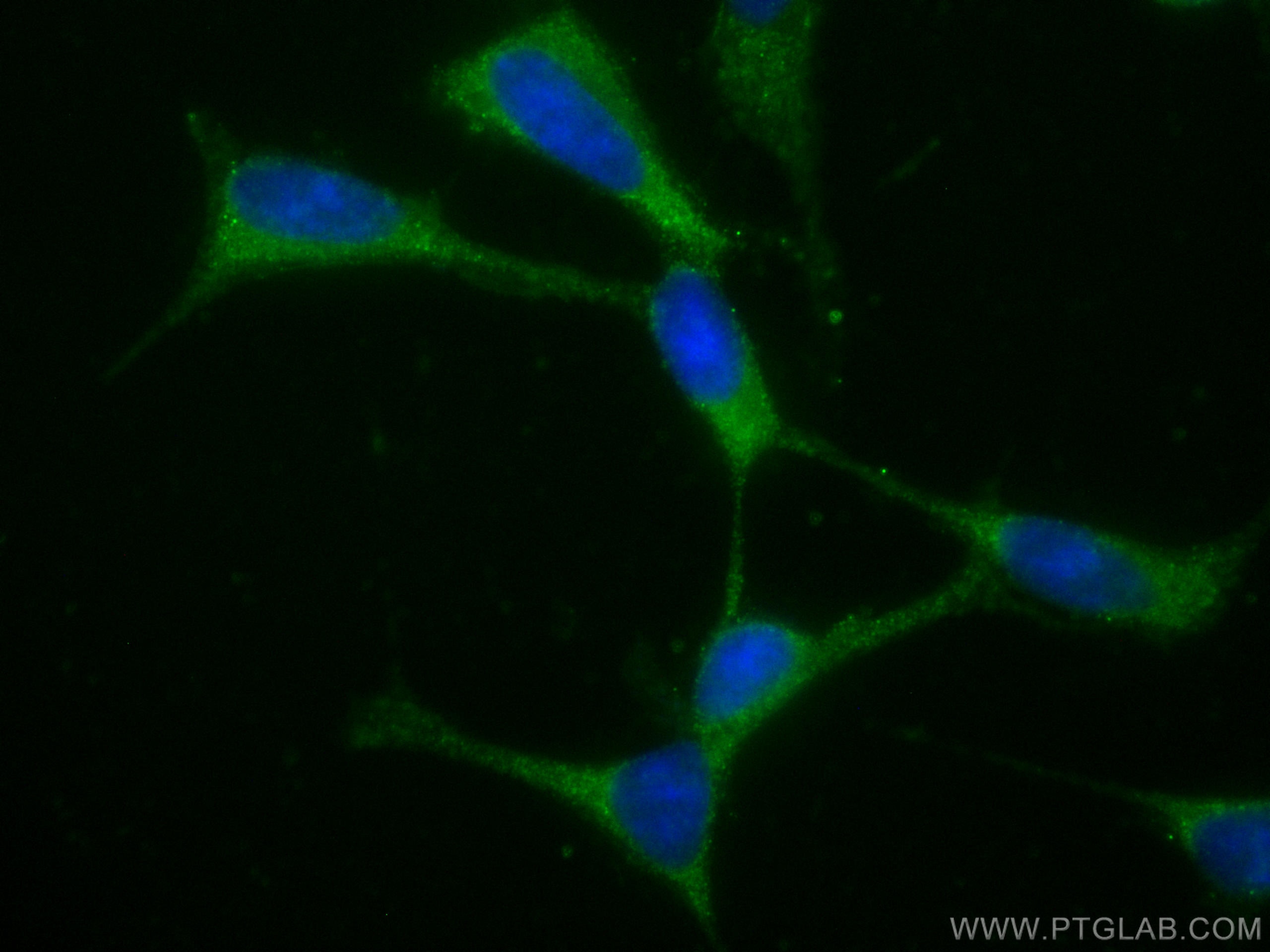Tested Applications
| Positive IF/ICC detected in | SH-SY5Y cells |
Recommended dilution
| Application | Dilution |
|---|---|
| Immunofluorescence (IF)/ICC | IF/ICC : 1:50-1:500 |
| It is recommended that this reagent should be titrated in each testing system to obtain optimal results. | |
| Sample-dependent, Check data in validation data gallery. | |
Product Information
CL488-27206 targets Huntingtin in IF/ICC applications and shows reactivity with human, mouse samples.
| Tested Reactivity | human, mouse |
| Host / Isotype | Rabbit / IgG |
| Class | Polyclonal |
| Type | Antibody |
| Immunogen |
CatNo: Ag25922 Product name: Recombinant human Huntingtin protein Source: e coli.-derived, PET30a Tag: 6*His Domain: 2845-3000 aa of NM_002111 Sequence: LDVGPEFSASIIQMCGVMLSGSEESTPSIIYHCALRGLERLLLSEQLSRLDAESLVKLSVDRVNVHSPHRAMAALGLMLTCMYTGKEKVSPGRTSDPNPAAPDSESVIVAMERVSVLFDRIRKGFPCEARVVARILPQFLDDFFPPQDIMNKVIGE Predict reactive species |
| Full Name | huntingtin |
| Calculated Molecular Weight | 348 kDa |
| GenBank Accession Number | NM_002111 |
| Gene Symbol | Huntingtin |
| Gene ID (NCBI) | 3064 |
| RRID | AB_3084108 |
| Conjugate | CoraLite® Plus 488 Fluorescent Dye |
| Excitation/Emission Maxima Wavelengths | 493 nm / 522 nm |
| Form | Liquid |
| Purification Method | Antigen affinity purification |
| UNIPROT ID | P42858 |
| Storage Buffer | PBS with 50% glycerol, 0.05% Proclin300, 0.5% BSA, pH 7.3. |
| Storage Conditions | Store at -20°C. Avoid exposure to light. Stable for one year after shipment. Aliquoting is unnecessary for -20oC storage. |
Background Information
HTT(huntingtin), also named as HD and IT15, belongs to the huntingtin family. HTT may play a role in microtubule-mediated transport or vesicle function. Defects in HTT are the cause of Huntington disease (HD) which is an autosomal dominant neurodegenerative disorder characterized by involuntary movements (chorea), general motor impairment, psychiatric disorders and dementia.
Protocols
| Product Specific Protocols | |
|---|---|
| IF protocol for CL Plus 488 Huntingtin antibody CL488-27206 | Download protocol |
| Standard Protocols | |
|---|---|
| Click here to view our Standard Protocols |




